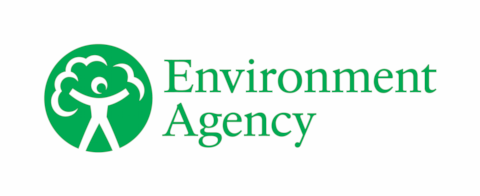Kent and South London water situation: August 2025 summary
Updated 12 September 2025
Applies to England
1. Summary
The entire Kent and South London (KSL) area received 37% of the long-term average (LTA) rainfall during August. Rainfall received across individual catchments ranged from exceptionally low to normal. Soil moisture deficits (SMDs) throughout all catchments increased during August and ended the month notably above the LTA. Monthly mean river flows (MMFs) ranged from exceptionally low to normal in August in KSL, however most fell into the normal category. Groundwater levels in the Chalk remained mostly normal across the KSL area at the end of August. Groundwater levels in the Greensand aquifer at Riverhead decreased slightly but remained above normal levels. Levels at all the 5 water company reservoirs declined throughout August, ending the month in categories ranging from notably low to notably high.
2. Rainfall
The entire KSL area received 37% of the LTA rainfall during August. Rainfall received across individual catchments ranged from exceptionally low to normal. The percentage of LTA rainfall received ranged from 23% in the Thanet Chalk area to 72% in the Upper Mole rainfall area. In the previous 3 months, spanning from June to August, 3 catchments in the northwest recorded below normal rainfall. The remaining 11 catchments recorded normal rainfall. In the previous 6 months, from March to August, rainfall ranged from exceptionally low to notably low in KSL. Catchments in the west of the patch received rainfall furthest below their LTA for this time period. In the last 12 months, rainfall received was normal in most catchments across KSL area. Below normal rainfall was recorded in 3 catchments in the north and northeast. The highest daily rainfall total of 58.3mm for August was recorded at Pease Pottage Rain Gauge in the Upper Mole catchment on 28 August. The next highest daily rainfall totals were on 29, 30, 31 and 27 July respectively and ranged from 10.1mm to 6.4mm. A total of 13 days recorded less than 1mm of rain. The longest dry period occurred from August 15 to 23, when 7 out of 9 days were below 1mm.
3. Soil moisture deficit and recharge
At the end of August, SMDs throughout the KSL Area were, on average, 35% higher than the LTA for this time of year. SMDs in all catchments increased during the month of August. Most catchments exhibited a notable increase in SMDs since the end of July, including the Stour; however, a few showed only slight increases in comparison, including the Mole. This change has been influenced by the limited effective rainfall received across the area during August, which amounted to just 27% of the LTA. At the end of August, SMDs ranged from 136mm to 201mm, whereas at the end of July, these ranged from 117mm to 165mm.
4. River flows
MMFs ranged from exceptionally low to normal in August in KSL. Exceptionally low flows were only observed at the River Ravensbourne at Catford in the northwest of the patch, and notably low flows were only observed at South Willesborough in the east of the patch. Below normal flows were observed at the River Wandle at Connollys Mill in the northwest and the River Rother at Udiam in the far south of the area. All other key sites recorded normal MMFs.
5. Groundwater levels
Groundwater levels in the Chalk remained mostly normal across the KSL area at the end of August. Chipstead, located in the western part of the patch, was the only area that recorded below-normal levels. Within that area, levels below normal were first recorded by the end of July. Levels in the Isle of Thanet at Fleete Reservoir that rose in late July stabilised at the end of August. Groundwater levels in the Greensand aquifer at Riverhead decreased slightly but remain above normal levels.
In areas such as Chipstead, where groundwater levels started to fall steeply in July and continued to do so in August, the steep fall was due to the amount of effective rainfall recorded that during the month of August was particularly low.
6. Reservoir stocks
Levels at all 5 of the water company reservoirs declined throughout August. At the end of August, reservoir levels (as % of live capacity) were:
-
notably low at Darwell at 42%
-
below normal at Bough Beech at 57% and at Bewl at 55%
-
normal at Powdermill at 55%
-
notably high at Weir Wood at 90%
7. Environmental impact
Widespread hands-off flow restrictions were applied to abstractors in the Stour catchment during early and mid-August as flows dropped below licence thresholds. In the Medway, widespread restrictions remained in place throughout August, having first been imposed in early April. A few restrictions were also triggered in the Mole catchment due to low flows, and these persisted through to the end of the month. One fluvial flood alert was issued in August.
Author: Groundwater and Hydrology Team, ksl.gwh@environment-agency.gov.uk
Contact details: 03708 506 506
All data are provisional and may be subject to revision. The views expressed in this document are not necessarily those of the Environment Agency. Its officers, servants or agents accept no liability for any loss or damage arising from the interpretation or use of the information, or reliance upon views contained in this report.

